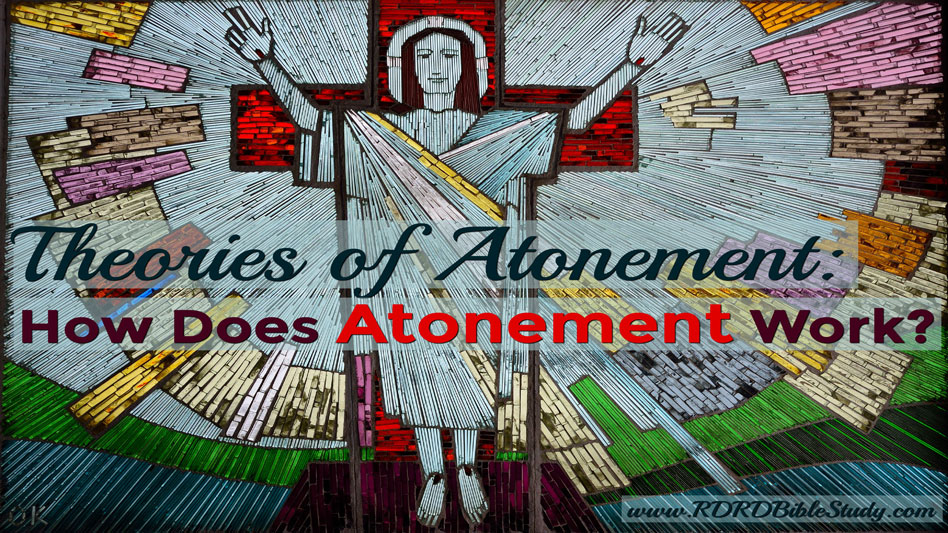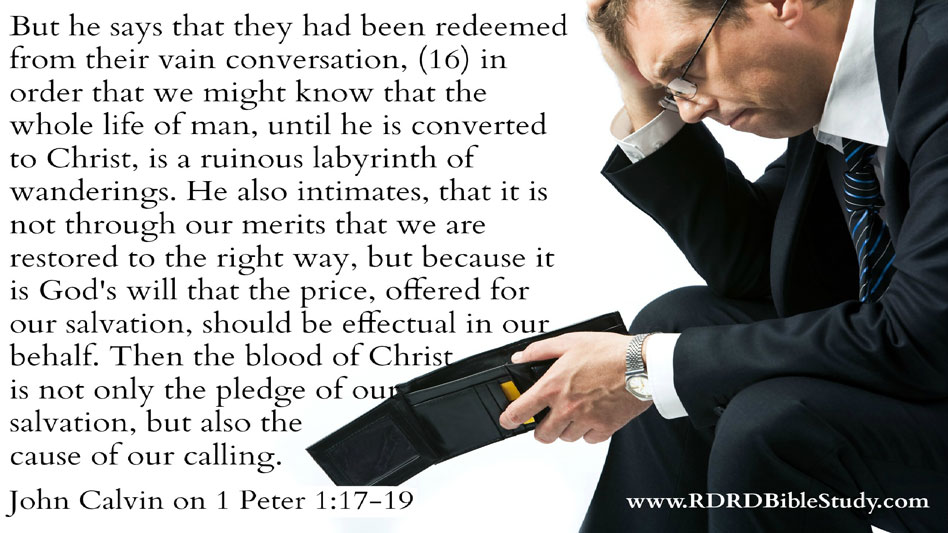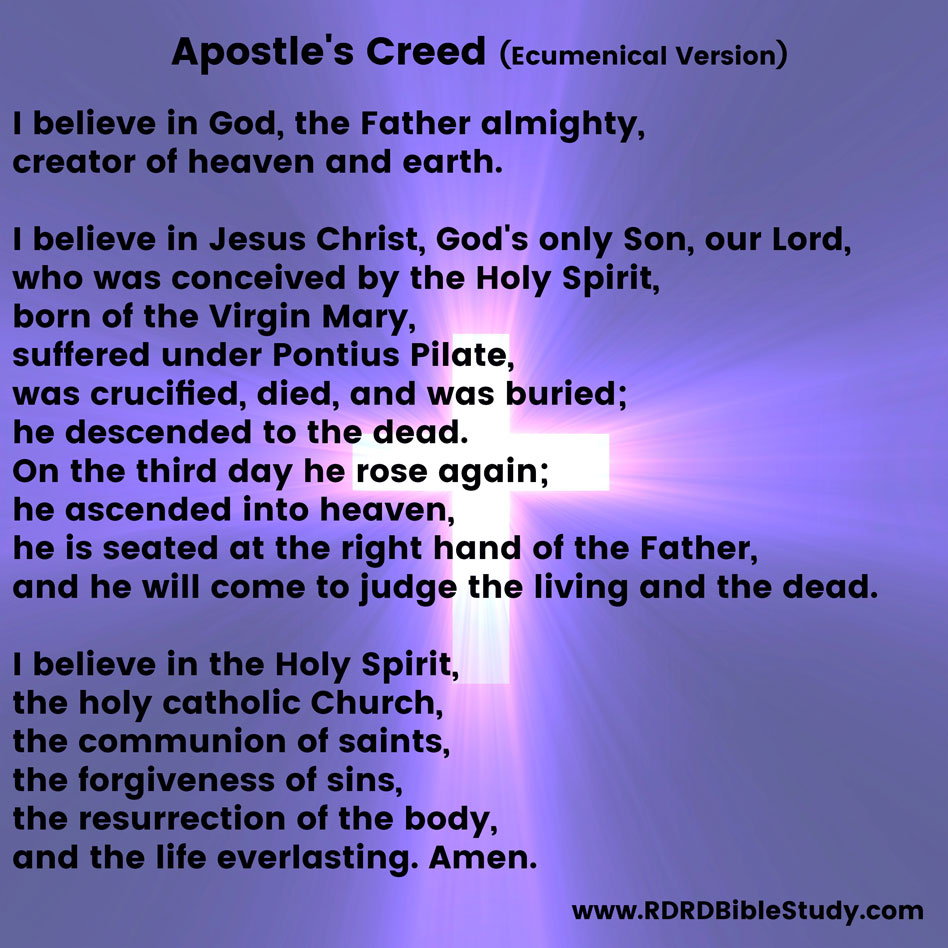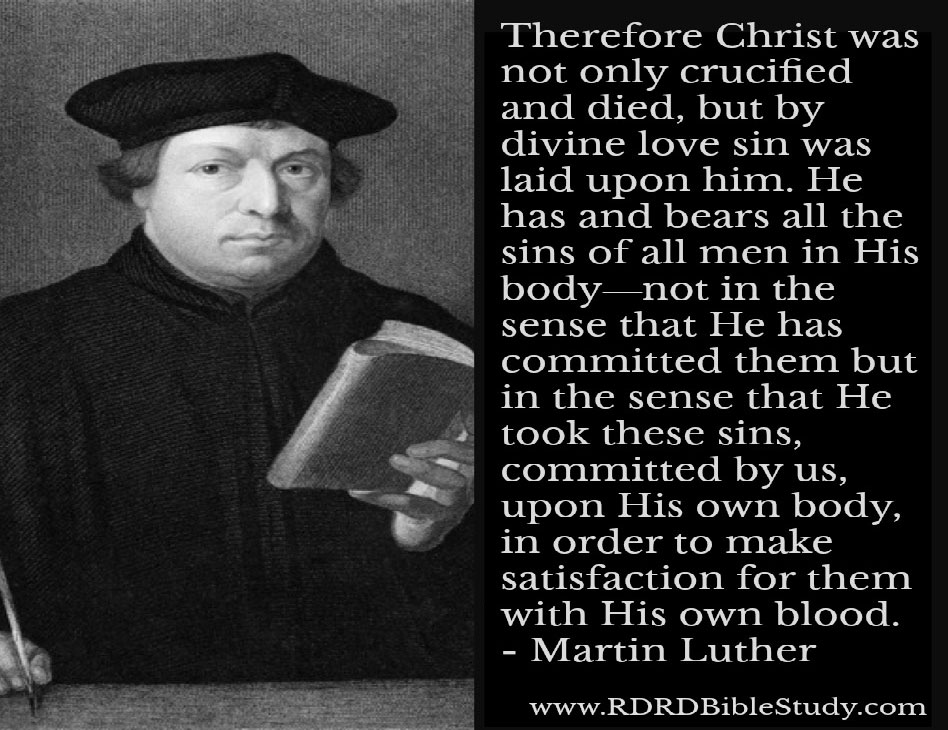Theories of Atonement: How Does Atonement Work?
“Atonement” may be defined as God’s work on sinners’ behalf to reconcile them to Himself.
That sentence says a whole lot with very few words.
Unpacking each phrase demonstrates how God, in the act of atonement, is both just and the justifier (Romans 3:26):
- God’s work—divine activity that confronts and resolves the problem of human sin.
- On sinner’s behalf—because of human fallenness, a sacrifice for sin is necessary to avert condemnation, that is, the wrath of God, which brings judgment and death.
- To reconcile them to Himself—so that people may enjoy fellowship with God both now and in the age to come.
Atonement is one of the central doctrines of Christianity. What Christ did on the cross—atonement—is the heart of Christian faith. According to Scripture, God enables this saving act which embodies His redemptive and restorative work.
Theology Study Tip
Scripture refers to atonement variably throughout as:
- ransom
- redemption
- covenant
- sacrifice
- reconciliation
- victory
But How Does Atonement Work?
The early church placed a great deal of emphasis on the fact that Christ saves through His atoning death. But few grappled with the question of “How?”
In the pursuit of studying the Bible effectively, great value resides in studying biblically informed systems, or theories, that attempt to explain the mysteries of the faith. And atonement is certainly no exception.
Examining the ideas of theologians throughout the ages who sought to articulate a clarifying formulation of the atoning work of Christ is not only educational but also edifying. Propositions delineating the multi-faceted nature of Jesus’ work on the cross developed as these theologians faithfully struggled with the question of “How?” in their own historical contexts.
The products of their prayerful study provide us with a richer understanding of what happened on that Good Friday so long ago.
Why Is Atonement Necessary?
Because Of A Little Word With Huge Consequences – Sin
Sin is the reason for God’s divine work of atonement.
More than any other ancient writings, the Bible takes seriously the subject and question of sin.
Behold, the LORD’s hand is not shortened, that it cannot save, or his ear dull, that it cannot hear; 2 but your iniquities [sin] have made a separation between you and your God, and your sins have hidden his face from you so that he does not hear. Isaiah 59:1-2
The need for atonement stems from the pervasive sinfulness of mankind and likewise, mankind’s incapacity to do anything about it. “All are sinners” according to Scripture (1 Kings 8:46; Psalm 14:3; Romans 6:23).
More importantly, the Bible testifies to the totalitarian character of the sinful nature. Sin’s authoritarian regime prevents mankind from ever living up to God’s standards of righteousness and holiness. This presents a serious problem.
The wages of sin is death (Rom. 6:23) and nothing unclean will enter heaven (Rev. 21:27). Sin excludes people from the blessing of God (Isa. 59:2; Hab. 1:13), and Jesus specifically said that blasphemy against the Holy Spirit can never be forgiven (Mark 3:29). These circumstances plummet even the most saintly into dire straits, much less the rest of us.
Yet, the Bible also testifies that regardless of the major breach that sin has created between God and mankind, God has once and for all dealt with it. In His divine providence He has acted redemptively so that humanity may find forgiveness and peace, that is, salvation—a gift of God’s grace, based on faith alone.
Repeatedly seen in the unfolding of salvation history are these joint truths:
- Humanity’s powerlessness to reconcile or mend spiritual separation from God
- God’s inescapable payment of the wages of sin
The tension held between these two truths is fundamental to understanding the biblical doctrine of atonement and likewise any theories trying to explain it. But one thing is clear—both testaments witness to the fact that God responds to the dilemma with atoning sacrifice.
The Complexity Of Atonement
A complete theory of atonement is not provided by a single NT writer. However, many passages witness to the efficaciousness of Christ’s work on the cross. Combining these truths reveal the complexity of this transcendent task.
Paul discusses atonement as a process of justification, using concepts of redemption, propitiation, and reconciliation. Other writers refer to the cross as a victory, an example, a sacrifice that makes a new covenant, or simply a sacrifice.
The problems of human sin are diverse and countless. We tend to only think of the physical and emotional ones—murder, abuse, lying, corruption. But as the saying goes “Where there is smoke, there is fire.” Likewise, sin existing at any level—from gossip to murder—emanates from deeper spiritual problems.
Regardless of the varied ways in which people look at sin and/or categorize its depravity—the NT proclaims, categorically, that the cross meets the need.
But the NT never explains exactly how this is accomplished.Even the church itself has never adopted an official, orthodox view, such as the ones that exist for Christ or the Trinity.
The Ecumenical version of the Apostle’s Creed, along with its various counterparts, simply state –
I believe in… the forgiveness of sins.
Throughout the ages, Christians have held to the mystery of the atonement—the faith-knowledge that Christ has saved us through His death on the cross—and haven’t argued exactly how salvation is accomplished.
Throughout the centuries many believers in different times and places have attempted to formulate a theory that would help others understand how God has worked to bring salvation. To this day, no one theory of atonement has ever won universal acceptance (!).
But that shouldn’t discourage us from studying the theories of atonement or delving into the subject ourselves. Every theory helps us understand a little more of what the cross means and paradoxically, to know the love of Christ that surpasses knowledge (Eph. 3:10).
And as grace extends more and more, may it increase thanksgiving, to the glory of God (2 Cor. 4:15).
Praise God that Jesus cannot be put in a box. Amen?
Three Categories of Atonement Theories
Many theories have been advanced over the centuries. Most can be classified in one of three categories:
- Effect on the believer
- Victory
- Emphasis toward God
Historical Theology Of Atonement
Throughout Christian History several theories of atonement have had a prominent influence on later generations as they themselves grappled with the “How?” of atonement in their own contexts.
Most Prevalent Theories Of Atonement In Church History
The theories below are listed in date sequence, for the most part, in order to demonstrate the progressive understanding of the atonement throughout church history. However, some do overlap as later scholars brought to fore earlier teachings.
- Cosmic victory, Christus Victor or Ransom Theory—Christ defeated Satan and triumphed over all created things.
- Subjective View or Moral Influence Theory—emphasizes the importance of the effect of the cross on the sinner.
- Anselm’s Satisfaction Theory—Christ’s death restored the honor of which God had been robbed through people’s sin.
- Penal substitution—Christ died in the place of sinners to pay the penalty for their sin.
- Sacrifice—both testaments corroborate the significance of sacrifice, so this is the “key” to understanding atonement
- Governmental Theory—Christ did not bear our punishment but suffered as a penal example whereby the law was honored and sinners were pardoned.
How Does Atonement Work? – Theories Of Atonement
1 Atonement As Victory: Ransom Theory or Christus Victor
Christus Victor, Latin “Christ is the conqueror” and Ransom Theory are included together because both have to do with Christ’s decisive victory over sin, death, and Satan. Jesus’ death on the cross marked the prophesied fatal head wound of the serpent (Gen. 3:15).
Near the end of the great resurrection chapter of 1 Corinthians 15, Paul writes “Oh death, where is your victory? Oh death, where is your sting?” Quoting Hosea 13:14, Paul incorporates the motif of “ransom,” an allusion that would not have been lost on Paul’s hearers.
Shall I ransom them from the power of Sheol? Shall I redeem them from Death? O Death, where are your plagues? O Sheol, where is your sting? Compassion is hidden from my eyes. Hosea 13:14
1a Ransom Theory, Devil-Ransom Theory, Classical Theory, or Fishhook Theory
The church fathers reasoned that because of sin, people rightly belonged to their accuser Satan. But God offered his Son as a ransom to free people from this situation, a payment the devil more than willingly accepted.However, Satan did not anticipate the consequences of this trade. When he finally got Christ into hell, he realized that the grave could not hold Him. On the third day Christ rose triumphant and left Satan without his original prisoners of sin or the ransom.
It doesn’t take a Christian rocket scientist to see that in God’s foreknowledge He would have foreseen how these events played out. But God being a conduit of an act of deception, even with the devil, didn’t concern the fathers. They considered it evidence of God’s greater wisdom and strength.
The Fathers illustrated this by saying that Christ’s flesh (fully human) was bait and His deity (fully divine) was the fishhook. When Satan took the bait, the hook paralyzed him, leaving him ineffective.
For there is one God, and there is one mediator between God and men, the man Christ Jesus, 6 who gave himself as a ransom for all, which is the testimony given at the proper time. 1 Timothy 2:5-6
1b Christus Victor
Almost a millennium after the church fathers’ devil-ransom and fishhook imagery, Anselm’s (1033-1109) critique of it caused it to dwindle in theological conversation. In recent times, however, the Swedish Lutheran theologian, Gustaf Aulen (1879-1977), demonstrated that the representation contained an important truth for the understanding of atonement (“Christus Victor,” 1931).
The final outcome of Christ’s atoning work on the cross means victory. The devil and his minions are defeated. Sin is conquered. Easter has in fact happened. These fundamental truths have always been present in Christian worship and devotion.
Since therefore the children share in flesh and blood, he himself likewise partook of the same things, that through death he might destroy the one who has the power of death, that is, the devil, 15 and deliver all those who through fear of death were subject to lifelong slavery. Hebrews 2:14-15
Whoever makes a practice of sinning is of the devil, for the devil has been sinning from the beginning. The reason the Son of God appeared was to destroy the works of the devil. 1 John 3:8
That Christ conquered sin, Satan, and death represents a central tenet of the Christian faith. On its own the Christus Victor theory simply means that God is stronger than Satan, a truth that can stand outside the discussion of atonement. Christ’s defeat of evil as victory is not a complete description of atonement, but it is an important facet of a complete theory of atonement.
2 Subjective View or Moral Influence Theory
The subjective view or moral influence theory emphasizes the importance of the effect of the cross on the sinner. This theory is attributed to Abelard (1079-1142), whose theology stressed the love of God. Forms of this theory are widely held especially among liberal scholars. It is sometimes referred to as exemplarism.
exemplarism – the doctrine that the death of Christ is of service to humanity solely as an exemplar of perfect love and self-surrender
The theory operates on the premise that people need their love for God to be stimulated. For this to occur necessitates a persuasive exhibition of God’s love. The cross provides this demonstration of divine love, i.e. a subjective experience of moral influence.
The cross confronts sinners with the greatness of divine love and creates in them a reciprocal love. If God would do such a thing, then people should no longer live in selfishness and continue to sin. Therefore, this influence leads to repentance which leads to salvation.
This theory highlights the importance of responding to the love of Christ demonstrated on the cross.
Therefore be imitators of God, as beloved children. 2 And walk in love, as Christ loved us and gave himself up for us, a fragrant offering and sacrifice to God. Ephesians 5:1-2
The core tenet of the moral influence theory is personal experience—Christ’s death provokes the love of God within a person. Its purview lies nowhere else.
Though truth exists in the moral influence theory, it basically states that Christ’s death was no more than theater. As a means to explain atonement, this theory highlights the importance of responding to the love of Christ demonstrated on the cross. The theory’s inadequacy is in its inability to explain the whole doctrine of atonement.
In reality, the death of Christ actually does something! Otherwise it would not be a demonstration of love. According to Scripture, there is power in the cross of Christ.
For Christ did not send me to baptize but to preach the gospel, and not with words of eloquent wisdom, lest the cross of Christ be emptied of its power. 18 For the word of the cross is folly to those who are perishing, but to us who are being saved it is the power of God. 1 Corinthians 1:17-18
Through the cross, sinners are reconciled to God.
All this is from God, who through Christ reconciled us to himself and gave us the ministry of reconciliation; 19 that is, in Christ God was reconciling the world to himself, not counting their trespasses against them, and entrusting to us the message of reconciliation. 2 Corinthians 5:18-19
3 Anselm’s Satisfaction Theory
In the 11th century, Anselm, archbishop of Canterbury, produced a book called Cur Dues Homo, Why Did God Become Man? In this book, Anselm severely criticized the ransom theory espoused by the early church fathers.
Anselm viewed sin as dishonoring the majesty of God. Because God is sovereign, He could not overlook evil done in His Kingdom. Therefore, an appropriate satisfaction is required for anything that harms the kingdom under God’s reign.
Anselm’s theory, presented in the scholastic method of his day, proceeds as follows:
a. Since God is sovereign over His Kingdom it is not proper for Him to exonerate any wrongdoing in His Kingdom.
b. However, the insult that sin has given to God is so great, that only one who is God can provide a proper satisfaction.
c. But the insult was done by a human, so only a human can provide the satisfaction.
d. Therefore, someone who is both God and human is needed.
Critics argued that Anselm’s theory made God sound like a king who is outraged over the behavior of his subordinates. More importantly, the theory doesn’t take into consideration God’s attributes of mercy, forgiveness, and grace. In His sovereignty, God can carry out all of these without adverse repercussions to His Kingdom.
Critics also noted that Anselm’s theory had no indispensable connection between Christ’s death and the salvation of sinners. Christ gained a reward through His atoning work, but since all things in heaven and on earth already belong to Him, He gave the reward to sinners. So it is more or less the way things worked out.
Most scholars today do not agree with the satisfaction theory. The idea of satisfaction, more at home in an 11th century medieval worldview, is no longer the norm. Still the concept of satisfaction is important for a complete understanding of Christ’s atoning work.
Anselm’s greatest contribution to the doctrine of atonement is pointing out the seriousness of sin.
4 Penal Substitution
The Reformers agreed with Anselm regarding the seriousness of sin. But instead of sin dishonoring God, they saw it as breaking His law. They held that the moral law is not to be taken lightly. “The wages of sin is death…” (Rom. 6:23).
And the woman said to the serpent, “We may eat of the fruit of the trees in the garden, 3 but God said, ‘You shall not eat of the fruit of the tree that is in the midst of the garden, neither shall you touch it, lest you die.'” Genesis 3:2-3
The very commandment that promised life proved to be death to me. 11 For sin, seizing an opportunity through the commandment, deceived me and through it killed me. Romans 7:10-11
For the wages of sin is death, but the free gift of God is eternal life in Christ Jesus our Lord. Romans 6:23
That sin leads to death is the problem for sinful human beings. Scriptures teaching the wrath of God and the curse laid on sinners had a significant influence on the thought of the Reformers.
These and other similar passages clarified to the Reformation fathers that Christ’s work consisted of Him taking the sinners’ place. In substituting Himself for sinners, He endured the death that is the wages of sin, and He became a curse on behalf of sinners. The Lord of Lords and King of Kings suffered the penalty for sin on behalf of all people everywhere. That penalty was God’s wrath and the sinner’s death.For the wrath of God is revealed from heaven against all ungodliness and unrighteousness of men, who by their unrighteousness suppress the truth. Romans 1:18
For you may be sure of this, that everyone who is sexually immoral or impure, or who is covetous (that is, an idolater), has no inheritance in the kingdom of Christ and God. 6 Let no one deceive you with empty words, for because of these things the wrath of God comes upon the sons of disobedience. Ephesians 5:5-6
He himself bore our sins in his body on the tree, that we might die to sin and live to righteousness. By his wounds you have been healed. 1 Peter 2:24
Christ redeemed us from the curse of the law by becoming a curse for us – for it is written, “Cursed is everyone who is hanged on a tree” Galatians 3:13
For our sake he made him to be sin who knew no sin, so that in him we might become the righteousness of God. 2 Corinthians 5:21
Criticisms of this view include 1) that sin nor its penalties can be easily transferred from one person to another; and 2) it maximizes the love of Christ and minimizes the love of the Father, setting them in opposition.
Depending on how the theory is stated, the criticisms may be warranted. However, it does not diminish the theory’s principle. Critics neglect to account for Scripture’s double identification—Christ is one with sinners, i.e. “…for those who are in Christ,” and the Son of God is one with God. Critics also neglect the widespread NT support for the theory.
There is therefore now no condemnation for those who are in Christ Jesus. Romans 8:1
I and the Father are one.” John 10:30
All this is from God, who through Christ reconciled us to himself and gave us the ministry of reconciliation; 19 that is, in Christ God was reconciling the world to himself, not counting their trespasses against them, and entrusting to us the message of reconciliation. 2 Corinthians 5:18-19
Though it may require thoughtful articulation, the penal substitution view conveys important truth about the way in which Christ atoned for sin. It also demonstrates God’s righteousness and justice. Due penalty is not disregarded in the process by which Christ saves.
and all who dwell on earth will worship [the first beast], everyone whose name has not been written before the foundation of the world in the book of life of the Lamb that was slain. Revelation 13:8
The penal substitution theory is the most widely held view of the atonement by evangelicals.
5 Sacrifice
Both testaments corroborate the significance of sacrifice. This has led some scholars to claim “sacrifice” as the key to understanding atonement. The pages of the OT, especially the Torah, are replete with sacrificial terminology. The NT speaks of Christ’s death on the cross as a sacrifice (Acts 20:28; Rom 5:9; 1 Cor 10:16; Eph 1:7, 2:13; Col 1:20; 1 Pet 1:2, 19; 1 John 1:7; Rev 1:5, 5:9, 12:11).
for this is my blood of the covenant, which is poured out for many for the forgiveness of sins. Matthew 26:28
The prominence of sacrificial language or imagery in the NT—Gospels (Jesus’ passion predictions and the narrative itself), Paul (Rom 3:24-26; 1 Cor 5:7; Eph 5:2) and the Book of Hebrews—argues strongly for the centrality of sacrifice to NT atonement teaching.
Any theory of atonement would be incomplete without the inclusion of the concept of sacrifice. But alone it does not fully explain the “how.”
6 Governmental Theory
This particular view of the atonement was developed by Dutch Jurist Hugo Grotius (1584-1645). According to Grotius, Christ did not bear our punishment but suffered as a penal example whereby the law was honored and sinners were pardoned.
The “government” theory is so named because Grotius saw God as a ruler or government head who passed a law—“The soul that sins shall die.” Because it was not God’s desire for sinners to die, He relaxed the demands of the Law while remaining holy by accepting the death of Christ instead.
Though God could have simply forgiven humanity that would have had no societal value. Jesus’ death was a public example of the sin and the lengths God would go to uphold the moral order of the universe.
And you, who were dead in your trespasses and the uncircumcision of your flesh, God made alive together with him, having forgiven us all our trespasses, 14 by canceling the record of debt that stood against us with its legal demands. This he set aside, nailing it to the cross. Colossians 2:13-14
This view demonstrates that God’s law must be respected. However, it certainly diminishes the role of Christ’s death in the plan of salvation. Given the centrality of the cross in the NT, any attempt to develop a theory of atonement should include that above all things.
Conclusion
The early church placed a great deal of emphasis on the fact that Christ saves through His atoning death. But few grappled with the question of “How exactly does atonement work?” In the ensuing centuries, many theories were put forth. Still the answer to “How?” remains a divine mystery.
The multiple theories and supporting Scriptures do help us perceive the kaleidoscopic nature of the atonement. A beautiful, yet complex mix of elements. To our human eyes, the multi-hued arrangement appears to present the beauty of Christ’s act of atonement. Yet when shifted only slightly, another detail of salvation’s multifaceted beauty glides into focus, refocusing what we thought we knew thus far.
After all is said and done, it is wise to recall J. I. Packer’s remarks made over four decades ago, when he himself delivered a lecture series on the atonement:
Human knowledge and thoughts are expressed in words, and what we must note now is that all attempts to speak of the mystery of the unique and transcendent God involve many kinds of stretching of ordinary language. …Ordinary language is thus being adapted for an extraordinary purpose when we use it to speak of God. (8-9)
Ordinarily speaking, all the theories are needed to point out each of the extraordinary aspects of atonement, though none fully explains exactly how this divine act of love does what it does. Even if all the theories were combined, still it is not possible to understand the whole of atonement.
The human predicament—sin—is nothing short of catastrophic. The sinner is lost, suffering hell, perishing, cast into darkness, etc. An all-encompassing act of atonement—redemption, propitiation, justification, reconciliation—must necessarily be complex.
Now we know in part, so a full understanding of the complexity of Christ’s death on the cross remains a mystery.
But praise be to God! He does not require us to have a completely developed systematic theology of atonement before we can partake of its extraordinary benefits. He only requires us to have faith in His Son and in His atoning work done on our behalf.
Until Next Time—
The grace of the Lord Jesus Christ and the love of God and the fellowship of the Holy Spirit be with you all. 2 Corinthians 13:14
Resources:
Leon Morris, “Atonement, Theories Of” in Evangelical Dictionary of Theology, 2 ed, edited by Walter A. Elwell (Grand Rapids: Baker Academic, 2001) 116-119.
















